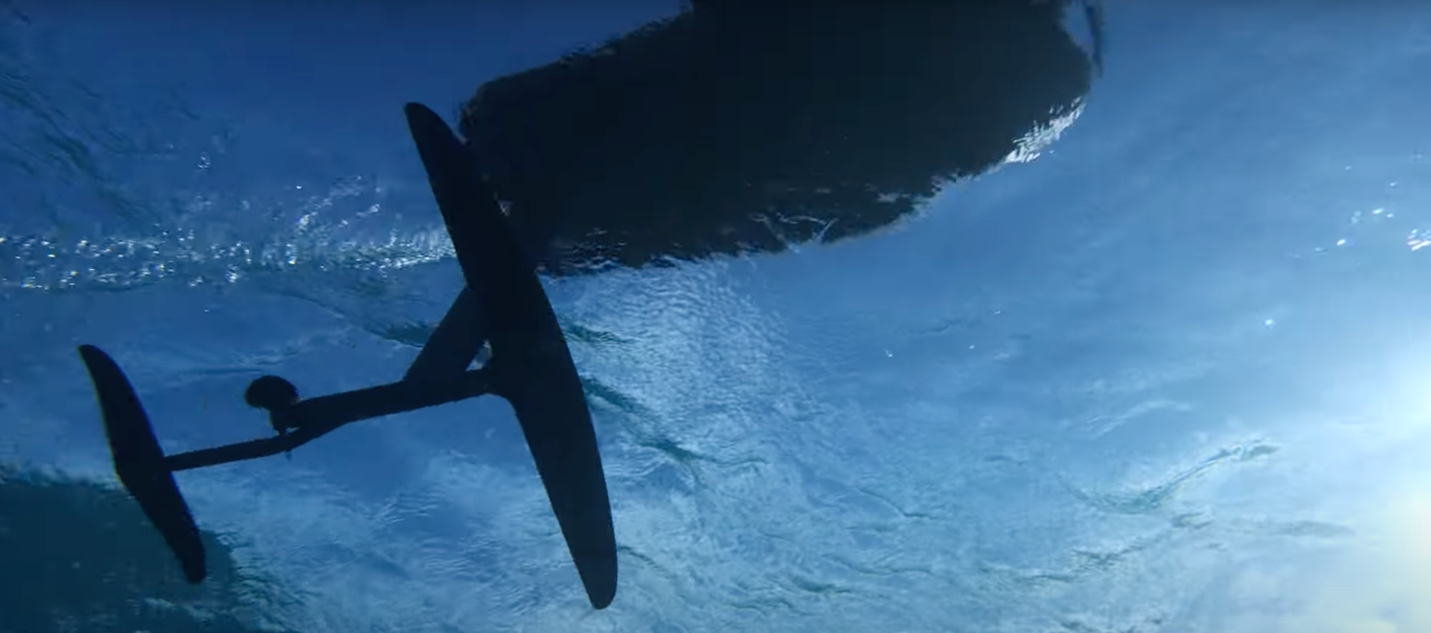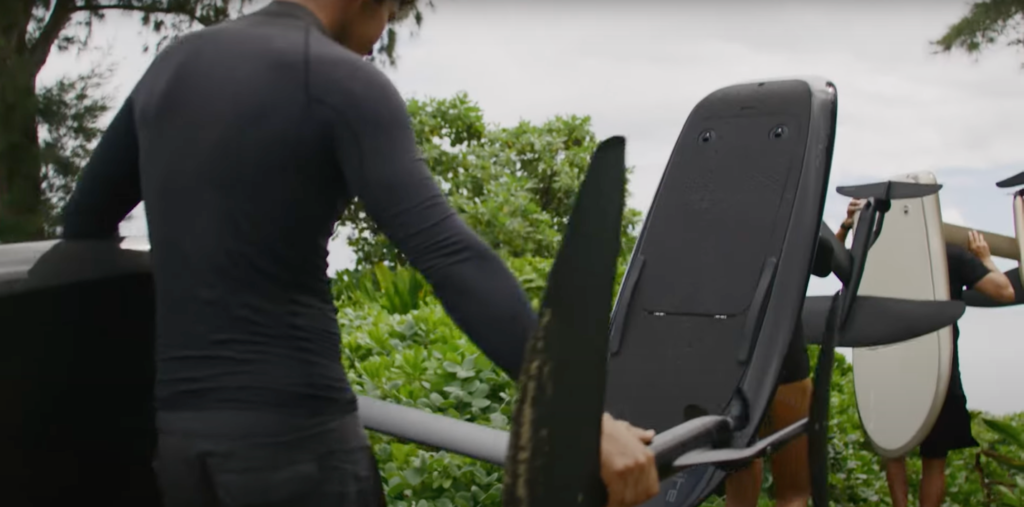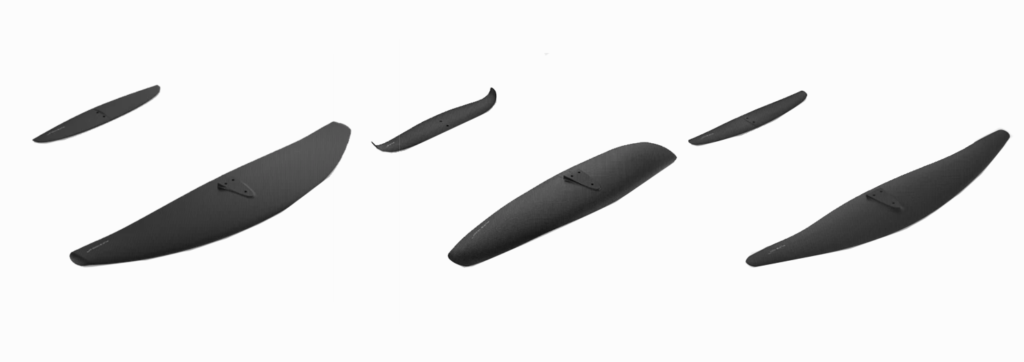

Understanding the Difference and Choosing the Right Fliteboard Wing
When selecting the right eFoil wing, choosing a high-aspect or medium-aspect foil is a big consideration. Each wing type provides a unique riding experience; understanding these differences will help you decide on the right wing and make you a more well-rounded foiler.
Aspect ratio is important, but many things beyond size and aspect ratio will impact the feel and performance of a foil. The most advanced foilers can look at a wing and get a good idea of how it will ride. This guide will explain the key differences between high- and medium-aspect foils, explain how to select the right size, and provide some insights on the Fliteboard range.
Table of contents
Regarding Fliteboard and eFoil Wings: Much of this is general information to help you understand hydrofoils better. eFoils provide a consistent source of power, so regardless of aspect ratio, the experience will be easier. For example, high-aspect foils will stall easier for someone using wind or waves to power the foil, while an eFoil will provide consistent, stable power, making it much easier to use. Regardless, there are important flight characteristics to consider.
Fliteboard offers a range of perfectly balanced medium to high-aspect wings designed for specific applications. We have more guides regarding the lineup and testing of an eFoil wing. This guide will share everything you need about aspect ratios to be an educated eFoiler and make better buying decisions regardless of your hydrofoil sport.
Testing a Fliteboard Wing.
We have a wing rental program that lets you explore the different ranges, sizes, and aspect ratios available from Fliteboard before you choose your next wing. You can read this blog and many others to get a general idea, but nothing compares to real-life experience.
Call or email us for more information on any of the wings in the lineup. Our expert team loves to talk foils almost as much as we love to use them. Our goal with the wing rental program is to help you understand each wing in the Fliteboard range and try it before you buy it.

When choosing a foil, consider that two wings with the same surface area can have different characteristics depending on their aspect ratio. A high-aspect foil will have a longer wingspan and a narrower chord, offering superior glide and speed. A low or medium-aspect foil will have a shorter wingspan but a wider chord, resulting in an easy lift with a more responsive rolling feel during turns. Medium aspect wings provide a great balance of maneuverability, roll, and glide. While eFoils do have external power, the aspect ratio is more about feel, as the limitations of a powerless foil won’t inhibit you. Low to medium-aspect foils thrive with an external power source, and while high-aspect foils have better-unpowered glide, they will benefit you with their top-end speed and control.
Drag and Speed Considerations: The thickness of your foil also impacts performance. Lower-aspect foils tend to be thicker, creating more drag underwater. This makes them slower but stable, which is ideal for beginners. In contrast, thinner high-aspect foils generate less drag, allowing for higher speeds and more efficient gliding. Modern wings have found an incredible balance between ease of use and performance.

High-aspect foils have a longer wingspan and a narrower chord. Think of a long, narrow mustache. This makes them highly efficient for gliding and high speeds.
What about Pump? When riding without power, an essential feature of high-aspect foils is their exceptional “pumpability”—the ability to maintain unpowered glide between waves or after you pull out of the boat’s wake. High-aspect waves are ideal for riders going fast or exploring wake or waves with or without power. They are particularly beneficial when the waves are small or mushy, as you can get more glide. As hydrofoil technology has evolved, many medium-aspect foils now have excellent glide and pump compared to just a few short years ago. At the same time, modern high aspects are far more user-friendly. There is a saying that today’s high-aspect is tomorrow’s medium-aspect. Rest assured that any wing from Fliteboard will have an excellent pump and glide, but the high aspects will blow you away.
Advantages of High Aspect Foils:
Disadvantages:
How do they feel on the water? Big high-aspect wings like a 1600 have a wide arching turn, but this will improve immensely as you size down to something like 700 to 1000. Think of a long airplane wing trying to make a turn. There is so much more to a foil than aspect ratio. Wing designers have lots of creative ways to make high aspects fly differently. Be sure to read what the foil is for and test for yourself.
Medium-aspect foils strike a balance between lift, speed, glide, and maneuverability. These wings have a shorter wingspan and a wider chord than high-aspect foils, making them more forgiving and easier to control. Medium-aspect wings offer a good mix of glide without sacrificing maneuverability, making them perfect for beginners and intermediate riders. They carve well and balance speed and control well, especially compared to their high-aspect counterparts. The easy, playful feel is popular with eFoilers, and depending on your aspirations, you may never want to switch to a high aspect.
Medium-aspect wings also provide more flexibility in varying conditions, from flat water to small waves, making them a go-to choice for surf foiling or all-around eFoiling. They feel maneuverable and playful and roll into the turns.
Advantages of Medium Aspect Foils:
Disadvantages:
How do they feel on the water? Medium aspects have a smaller wingspan so that they can roll sharper into turns. They tend to be beginner-friendly and playful. Reading what the wing is designed for and testing it is the best way to understand how a foil will perform for you.
Where to Use Medium Aspect Foils: A medium aspect wing like the cruiser is ideal if you are new. Medium-aspect foils are a fantastic middle ground for riders who want to learn how to eFoil or surf small to medium waves. Modern medium aspects can be optimized for wave performance, too. A hybrid medium to high-aspect wing like the Flow S 1300 will be amazing in slow waves, while something like the higher-aspect Flow 900 will turn sharp and perform best at speed in steeper waves.

Beyond aspect ratio, the size of your foil plays a key role in determining performance and difficulty. Larger wings, like 1300 and above, provide more lift, making it easier to take off and stay stable on the water. These are ideal for beginners or riders who need a stable, fun, forgiving ride that makes them feel like a hero on the water right from the start.
On the other hand, smaller wings like 1100 and below offer incredible speed and responsiveness but require more skill and practice to control. The medium-aspect Cruiser 1100 is our top pick for beginners who don’t mind a slightly longer learning curve for the benefit of a more exciting front wing.
With a medium-aspect 1100, you are looking at maybe an extra hour or two to learn compared to the 1300. The real joy is in the reactive fun feel. The 1300 and 1100 feel similar, but there is a faster response and better turn to the 1100. You’ll notice the wing responds faster to less input from your heels and toes while turning faster.
Does size impact aspect ratio regarding ease of use and drag? High-aspect wings generally create less drag, making them ideal for riders seeking higher speeds and longer, unpowered gliding sessions. However, because of their larger wingspan, they aren’t as nimble when turning in small spaces and require more skill.
Consider the size of the wing. Smaller, high-aspect wings will be more maneuverable and have an amazing turning response. Something like an 800-high aspect will turn faster and be more maneuverable than an 1800-medium aspect. The smaller the wing, the less thick it will generally be, meaning less drag and more efficiency. Conversely, a large high-aspect wing will have more drag, be more stable on a certain axis, and be easier to learn. That said, medium-aspect wings of all sizes are generally easier to learn with.
To help you understand which wing suits you best, here’s a breakdown of the difficulty levels for high and medium-aspect foils across various sizes (from 800 cm² to 1600 cm²).
Test Wings with Emerald Wake’s Wing Rental Program
Choosing the right foil can be tricky, especially with so many options. Testing is the best way to see what works for you. At Emerald Wake, our Wing Rental Program lets you try out a variety of wings—including high, medium, and low aspect options—so you can feel the difference for yourself. Test wings like the Cruiser 1100, Flow 1100, and the Flyer 800 to find the perfect setup that fits your style and goals.
Book Your Test Ride
Ready to find the perfect wing for your Fliteboard? Book your test ride today with Emerald Wake’s Wing Rental Program and start your journey toward discovering the right eFoil wing for you.
If you have any questions about wings or need help deciding which is best for you, call 850-400-8500 or email us at [email protected] for a custom recommendation. We offer eFoil lessons, guided eFoil tours, eFoil demos, storage and delivery options for your eFoils, and more.
Please fill out this form and someone from our team will contact you as soon as possible. You can also reach us by email at [email protected]